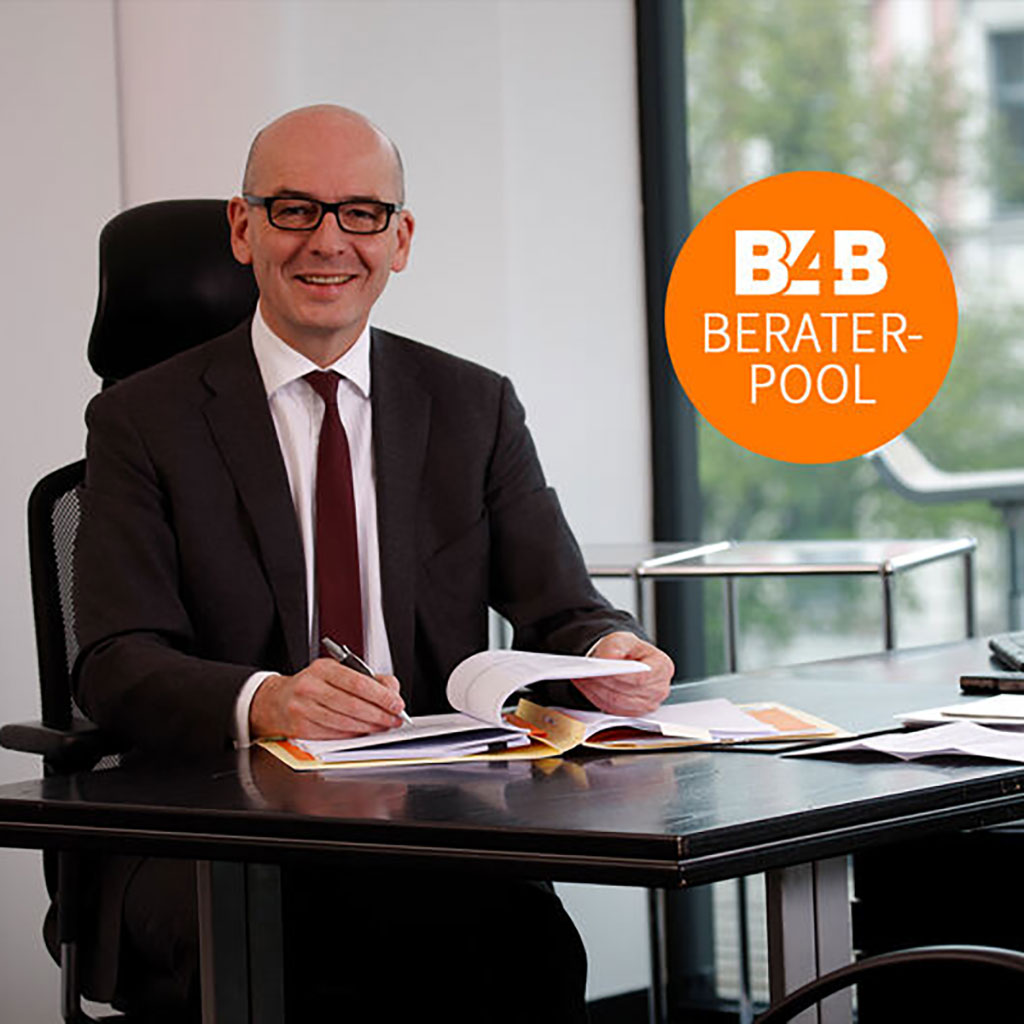
by Dipl.-Phys. Dr. Bertram Rapp
(Foto: Laura Cedrone/B4B WIRTSCHAFTSLEBEN SCHWABEN)
Patent attorney Dr. Bertram Rapp, Charrier Rapp & Liebau
7 Rules for Effective Trademark Protection
In his latest article, brand expert Dr. Betram Rapp outlines the most important considerations and tips regarding the legal protection of one’s own brand.
A trademark has the function of individualizing and highlighting one’s own products. It can be protected for goods and services. As the owner of a trademark, you can prohibit third parties from using the same or confusingly similar designations for the same or similar products. Even more important, however, is the defensive function of the trademark, i.e. the security of being able to continue using one’s own product designations if a third party registers them as a trademark. In fact, without a trademark of one’s own, there is no right to continue using designations that have already been used if they are applied for by someone else!
The following are some helpful considerations in connection with your own trademark application:
1. Can the trademark be protected?
Designations that are not distinctive for the products in question and must be kept clear for competitors to describe the product cannot be protected as a trademark. For example, the word “Apple” cannot be protected for fruit, but it can be protected for computers.
Tip: A descriptive indication can be verbally or graphically altered in such a way that it becomes protectable, e.g. aeroclean instead of airclean for air cleaning devices.
2. Does the trademark already exist?
A trademark search is indispensable to find out whether the designation has already been used. Important: There are three different trademark systems with effect for Germany, namely the German trademarks, the European Union trademarks and the international registrations. Furthermore, searches should not only be carried out for identical trademarks, but also in the area of similarity. It is permissible for the same trademark to exist more than once if it is protected for different, non-confusable products. For example, the trademark “Powerball”, on the one hand for dishwashing detergents, on the other hand for toys belongs to different owners. If potential collisions with older trademarks are identified during the search, these can often be resolved with so-called delimitation agreements.
Tip: Trademark registrations can be searched on the website www.tmdn.org/tmview/welcome.
3. Which goods and services?
Together with the trademark application, a list of the desired goods and services must also be filed with the patent office. However, often important goods and services are forgotten during the application or an incorrect indication is made, which results in the trademark being worthless. For example, the owner of a furniture store may intuitively name the goods “furniture, mirrors, picture frames” in class 20. However, this is a serious mistake, since he usually does not manufacture such goods himself, but only sells them, and therefore class 35 “retail trade with furnishings” would be applicable.
4. Less is more!
The mistake is often made to apply for complex trademarks consisting of word and figurative elements as a whole. Such trademarks are easy to circumvent if only a part of them is used.
Tip: In the case of a combined word/figurative mark, it is often advisable to apply for the word and figurative elements independently…
5. Where should the trademark be protected?
The first question here is in which countries the trademark is to be used and therefore requires protection. Often a German trademark application or a Union trademark application naming all 28 EU member states is filed. Both trademarks can then be used as the basis for an international registration, in which most of the countries of the world can be named.
Tip: If international trademark protection is also to be claimed in countries outside the European Union, it is advisable to base this international registration on a German trademark, and not on an EU trademark, as this is significantly less expensive.
6. What happens after the application?
First, if everything has been done correctly, the trademark will be registered by the Patent Office. From this point on, the trademark can be used to oppose younger trademarks to which there is a likelihood of confusion. In addition, you can now affix the coveted ® sign next to your trademark, which refers to your registered trademark.
Tip: It is advisable to commission a collision monitoring service, as the German and European Trademark Offices do not check whether there are already earlier rights when registering new trademarks, and it is up to the trademark owner to identify these confusable younger trademarks himself and to take action against them in due time.
7. must I use the trademark? At the latest after 5 years from the date of registration, the trademark must be used by yourself or with the consent of a third party, otherwise it is ready for cancellation and can be deleted from the register (upon request) due to non-use.
Tip: Check after 4 years at the latest whether the requirements of use are fulfilled, so that the trademark is not ready for cancellation.
Taking the above considerations into account, you can effectively protect your name as a trademark. Afterwards, you can actively market your name and benefit from the comprehensive legal protection provided by your own trademark.
Do you have any questions for patent expert Dr. Bertram Rapp, or would you like more in-depth advice?
